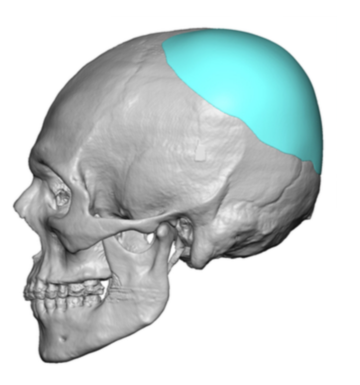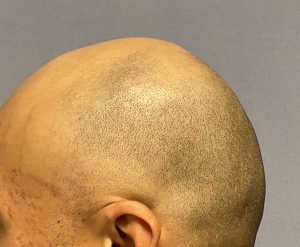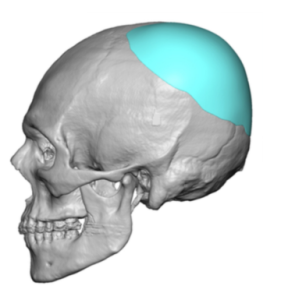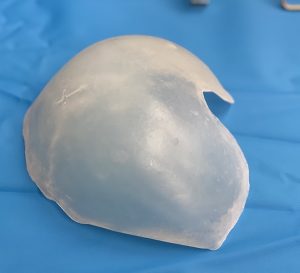Background: The skull is prone to a wide variety of aesthetic shape deformities that are readily visible in the contemporary short hair or shaved head male. While many of these shape issues are random some do fall into general categories that have a very specific developmental cause. As a result I often see them with some regularity due to their consistent occurrence.
One such common skull shape deficiency is the posterior fontanelle indentation. The posterior fontanelle is the well known soft spot on the back a baby’s head that is larger and closes later than the soft spot on the front. In some cases while the posterior soft spot closes, it does not develop a bone thickness like that of the surrounding skull. While this poses no medically harmful effects, it can cause variable amounts of indentation or crater-like deformities at the top of the back of the head. (crown area)
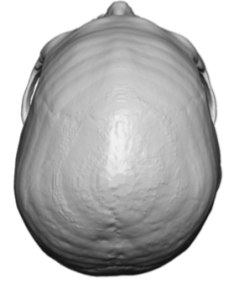
In improving the shape of the posterior fontanelle skull deformity the treatment options depends on the diameter of the surface area of the deformity. If it is relatively small (5cms or less) then direct application of a bone cement will suffice. But larger surface area augmentations require a custom skull implant to achieve a satisfactory reshaping effect.
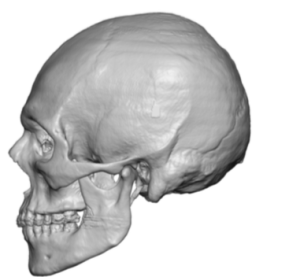
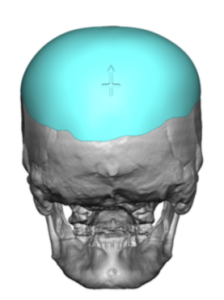
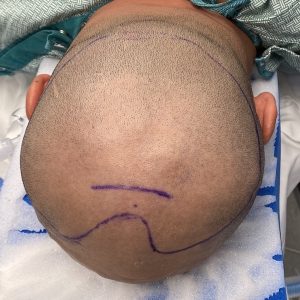
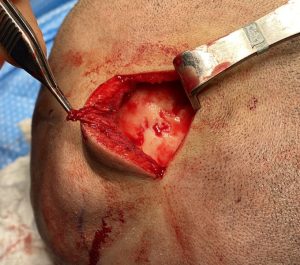
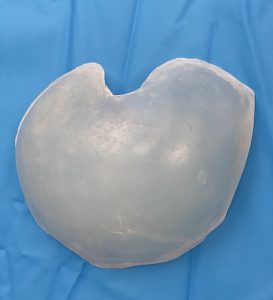
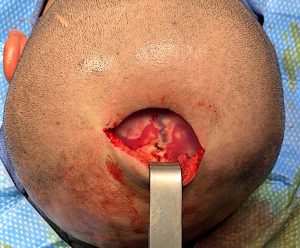
There are multiple flattening effects that occur on the back of head fora varsity of reasons. But a central indentation/depression located above the junction of the sagittal and lambdoidal sutures indicates a bone thickness issues over the original infant posterior fontanelle site. A custom skull implant that adequately covers the extent of the flattening effect at the crown head area provides the most effective shape correction that looks natural due to the surface area of the implant design.
Case Highlights:
1) The posterior fontanelle skull deformity is an aesthetic skull indentation on the upper back of the head that occurs from an incomplete bony thickening of the original posterior fontanelle closing.
2) Like a crater the posterior fontanelle indentation affects more than the residual fontanelle site but causes a general flattening of the overall upper back of the head.
3) A custom skull implant placed through a superior incision provides the best release of the adherent tissues and reshaping of the upper back of the head.
Dr. Barry Eppley
Indianapolis, Indiana

